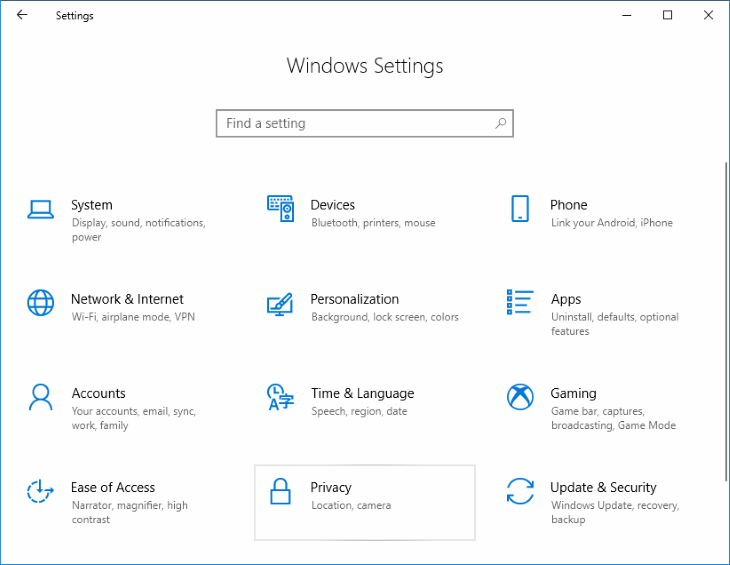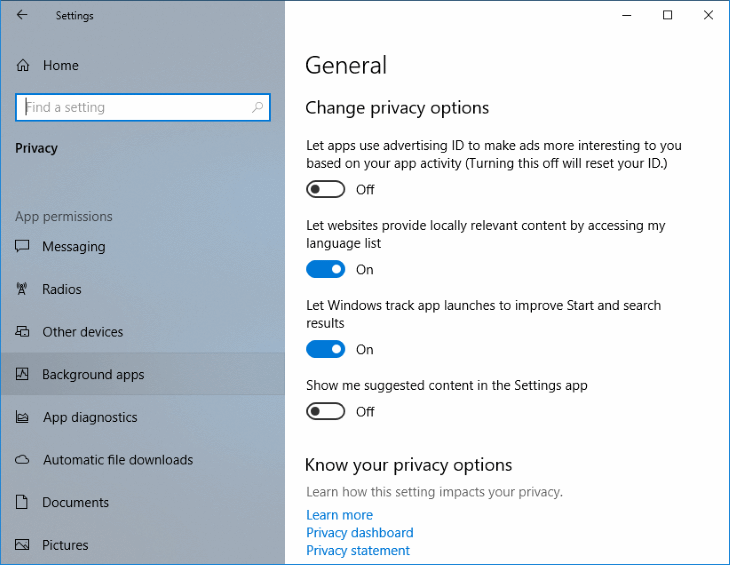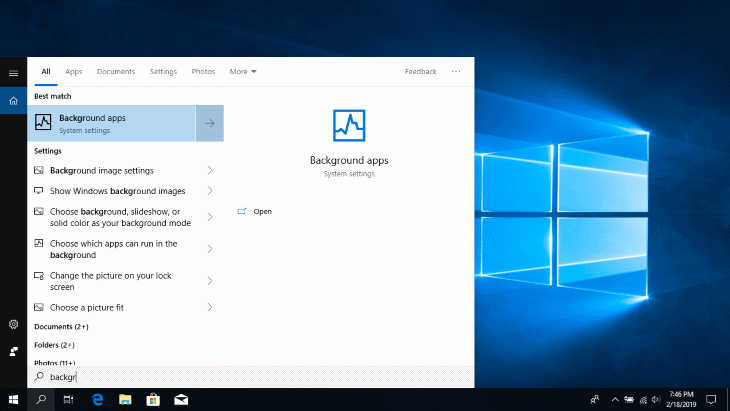Background apps are programs that can perform actions even if they are not opened. An example of a background app under Windows 10 is Mail. Even if the app is closed, it can sync emails with the email server, notify you about new emails via Windows’ notifications, and list the emails on the Mail’s live tile on the Windows Start pane.
Why would you want to prevent apps from running in the background? Primarily to reduce computing load, improve battery life of your laptop, and lower Internet data transfers and Internet traffic costs.
Thankfully, most of the background apps aren’t demanding. At least not while they run in the background. We did a test on a Windows 10 laptop with a common Intel Core i5 processor and found that all background apps on it use only around 1-2 percent of the processor capacity and have around 5% share in the overall battery usage. Of course, these percentages depend on the number of these apps, their design and usage, and settings in these apps.
If you want to disable background apps anyway you can do it in the Background apps section of Windows Settings. You can also reduce background activity in Windows 10 by disabling startup apps and disabling Windows services. But, performance improvements and battery life savings by disabling startup apps and services are negligible on modern laptops. Furthermore, most of the Windows services are needed for normal functioning of Windows and hardware, so we don’t recommend messing with them. Especially if you are not an advanced Windows user.
This post is focused only on the background apps listed in the Background apps section. These modern-type apps usually come as a part of Windows 10 or through Windows’ built-in Microsoft Store, as opposed to the traditional desktop-type programs.
Disabling Background Apps in Windows Settings
To disable the background apps, go to Settings / Privacy / Background app. There are multiple ways to get there.
One of them is to:
– Click on the Windows Start button in the extreme lower left corner of the screen and then click on the Settings (gear) icon.
Note: To open the Settings window, you can also press Windows key + I key on the keyboard.

– Click on the Privacy item on the Settings window that will show up, and then click on the Background apps item on the left sidebar of the Privacy window.


You can also get to the Background apps window by clicking on the search icon in the the lower left corner of the screen, typing background apps in the Windows Search box, and clicking on the Background apps item that will show up in the search results.

Here’s what the Background apps window looks like:

On the Background apps window, you can turn off all background apps at once using the first on / off toggle switch named “Let apps run in the background”. Or, you can individually enable / disable apps using the toggle switches near each app’s name.
However, you probably don’t want to disable all of them. For instance, if you disable Alarms & Clock, alarms you set won’t work. By disabling Email & Calendar you won’t get new email and calendar event notifications of the Windows Mail and Calendar apps. Also, it is important to have Windows Security running in the background to protect yourself from security threats in real time. So, it is advised to disable apps you don’t need individually.
Note: This “how to” guide can be also applied to desktops and other type of PCs with Windows 10 OS.

oh your post is really nice